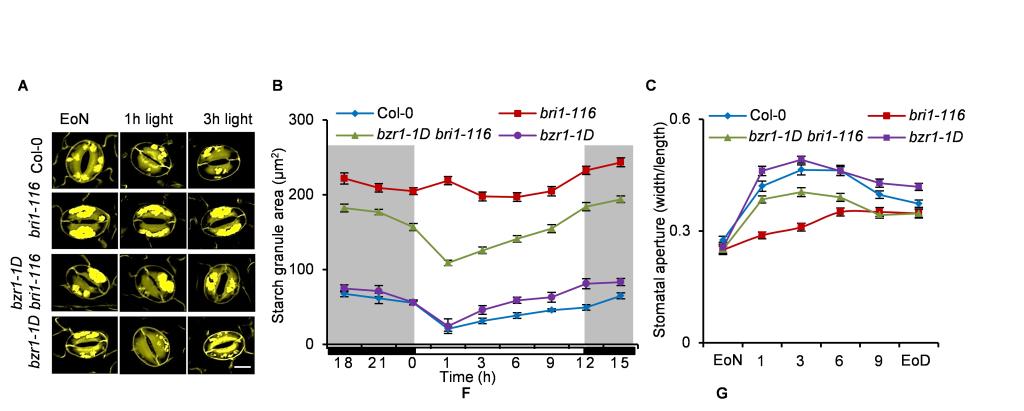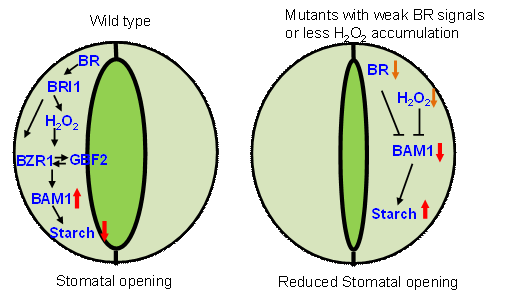Recently, Prof. Ming-Yi Bai's group, from the School of Life Sciences, made new progress in phytohormone brassinosteroid regulation of stomatal opening. Related results have been published on the international top journal The Plant Cell entitled “Brassinosteroid and hydrogen peroxide interdependently induce stomatal opening by promoting guard cell starch degradation” (IF=9.2). The first author is Ph.D. candidate Jinge Li from the School of Life Sciences, and Prof. Bai is the corresponding author.

Guard cells, which flank the stomata in plant leaves, undergo volume adjustments to regulate the stomatal movement that is essential for gas exchange and water evaporation during photosynthesis and transpiration. One key to stomatal opening is known to be the degradation of starch in the guard cells. However, our understanding of the regulation of guard cell starch metabolism is fragmentary.
Prof. Bai`s group previously revealed that redox signal hydrogen peroxide (H2O2) positively regulates plant steroid hormone brassinosteroid (BR) signaling pathway by oxidative modification the master transcription factor BZR1 (Tian et al., 2018, Nature Communications). Based on these results, Prof. Bai`s group found that BR and H2O2interdependently promote starch degradation in guard cells thereby inducing stomatal opening. BZR1 interacts with the bZIP transcription factor GBF2 to induce starch turnover by promoting the expression of β-amylase1 (BAM1), which is responsible for the majority of starch degradation in guard cells. H2O2induces the oxidation of BZR1 and enhances the interaction of BZR1 with GBF2 to increase the transcription of BAM1 and promote starch degradation in guard cells. Mutations in BAM1 resulted in a significant accumulation of starch in guard cells, and impaired stomatal opening in response to BR and H2O2. Overall, these results demonstrated the critical roles of BR and H2O2in regulating guard cell starch metabolism and stomatal opening.

This work was supported by grants from the Natural Science Foundation of Shandong Province and the National Natural Science Foundation of China.
The links of papers:
http://www.plantcell.org/content/early/2020/02/12/tpc.19.00587